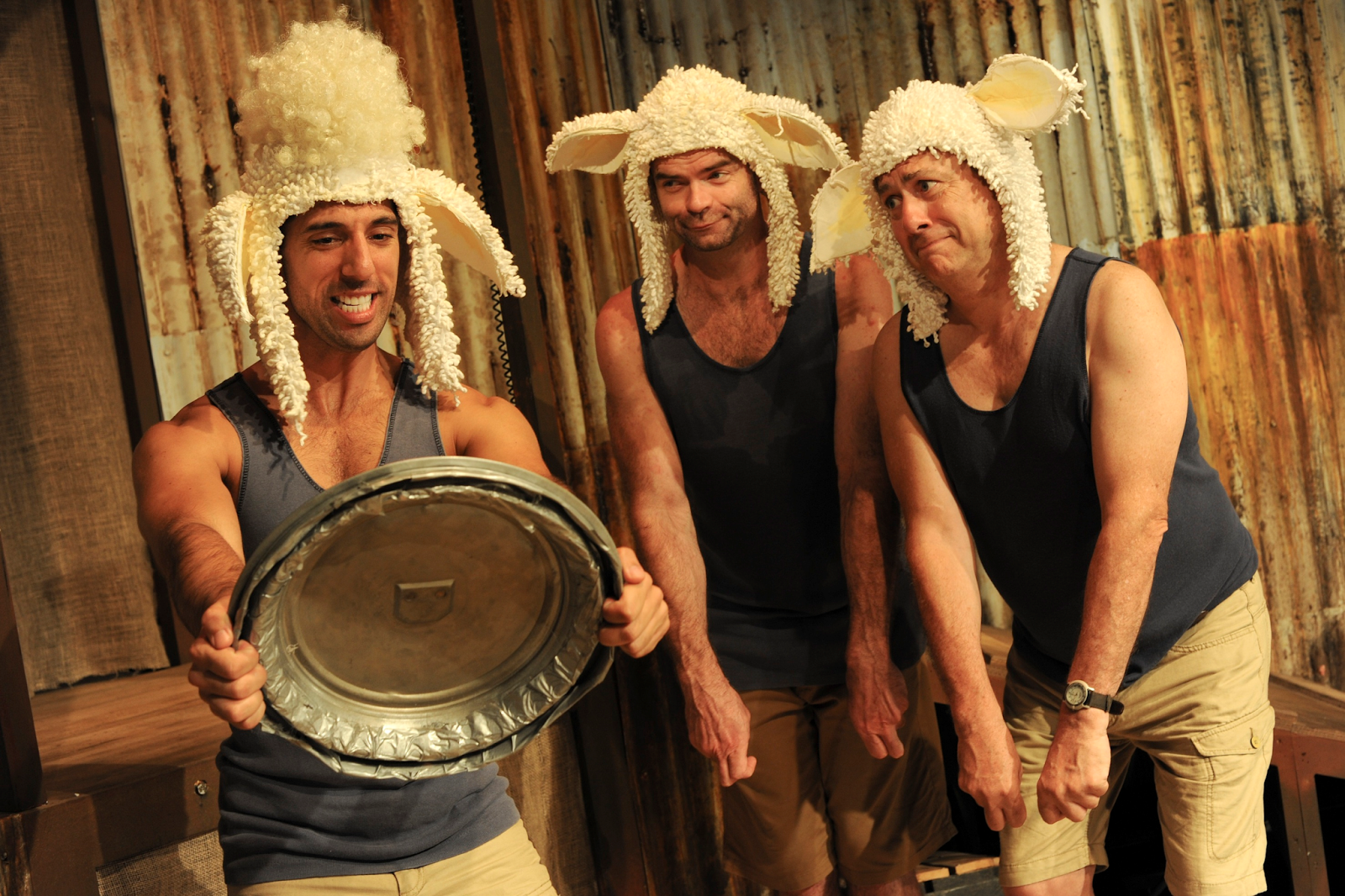Writer:
Bryce Hallett
Director:
David Berthold
Musical
Director: Chong Lim
Set and
Costume Design: Adam Gardnir
Presented by
Blake Entertainment
Canberra
Theatre
September 7, 2014.
Reviewed by
Bill Stephens
Anyone
expecting “Rolling Thunder Vietnam” to be just another loud head-banging rock
concert is in for a surprise. Yes there is loud rock music, but in this show it
is beautifully arranged and produced so that you can hear the lyrics - and in
this show the lyrics have context – and in this context some of these lyrics
are very powerful and moving.
Described in
the publicity as a concert drama, “Rolling Thunder Vietnam” is a remarkable
production by any measure. From the very first guitar chords of Steppenwolf’s “Magic
Carpet Ride”, the audience is hurled into an emotional rollercoaster ride
through the period of history defined by the Vietnam War.
Billed as "songs that defined a generation”, “Rolling Thunder Vietnam” delivers much more
than it promises, leaving those members of the audience who have lived through
that period, as well as those who only know it from second-hand accounts, deeply moved by the potency of the songs and
their presentation.
 |
| Wes Carr - Matthew Pearce - Tom Oliver |
Bryce
Hallett has provided an electrifying script, drawn from actual letters and
first-hand interviews, distilled into a compelling account of three young
every-men, two Australians and one American, drawn into that war. Tom Oliver, Wes Carr and Matthew Pearce play
the men and address the audience directly as they recount their experiences. Kimberley
Hodgson and Vanessa Krummenacher portray various women in their lives, and Will
Ewing provides back-up vocals and a multitude of other characters. All sing
solos, and produce brilliant harmonies in the ensemble numbers.
Their
stories are interwoven with key songs from the period. These songs weave seamlessly
through the narrative, informing and enhancing the text, and becoming powerful
and moving declarations of love, loss and protest.
“Most People
I Know Think That I’m Crazy” is sung by Tom Oliver to describe the reaction of
his parents and friends to the news that he has volunteered to go to war. With “Help
Me Make It Through The Night”, Kimberley Hodgson describes the loneliness of
separation. Kimberley Hodgson again, achieves the near-impossible by managing
to turn “Killing Me Softly With His Song” into a beautifully sung, heart-wrenching
response to the news of the death her fiancé. Each of the six soloists is
superb, equally persuasive as both actor and singer.
The beautifully balanced sound allowed the virtuoso
five-piece band, lead from the
key-boards by Musical Director, Chong Lim, to impress mightily with its ability
to move effortlessly through a soundscape which embraces the head-banging anarchy
of Steppenwolf’s, “Born To Be Wild”, the
Stones, “Paint it Black“ and a deeply moving arrangement of Simon and Garfunkel’s
anthem, “Bridge Over Trouble Waters”. The musical arrangements allow space for
the audience to appreciate scorching solos from guitarists Stuart Fraser and
Brett Garsed, Craig Newman’s driving bass, and Angus Burchall’s superbly
textured percussion.
David
Berthold’s direction is tight and imaginative. The performers toss dialogue
between each other as they enter and exit the stage. Each song is delineated with its own unique
staging. Each performer is superbly showcased to display individual strengths
and talents, and even some impressively energetic physicality.
Adam Gardnir’s
splendid setting is particularly evocative, with four huge video screens
displaying Toby Harding’s brilliant, ever-changing montage of brilliant archival
and abstract images, in front of a textural background of beautifully-lit camouflage-material
drapes. His costumes are subtle, attractive and appropriate.
Much more
than a concert. Much more than a documentary. “Rolling Thunder Vietnam” is a
superbly presented theatrical experience which will leave you entertained,
informed and surprisingly moved.
 |
| The Cast of Rolling Thunder Vietnam |

_in_The_Gruffalo__PhotoJamesTaggart.jpg)
_StephenAnderson(Fox)_ChandelBrandimarti(Mouse)_PhotoJamesTaggart.jpg)














